Themed collection Editor’s Collection

Approaches for peptide and protein cyclisation
Polypeptide cyclisation can enhance thermal stability, proteolytic resistance and membrane permeability. Cyclisation can be achieved by methods including chemical, enzyme and protein tag approaches. Each has strengths and limitations.
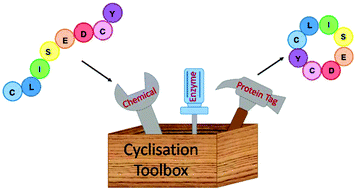
Org. Biomol. Chem., 2021,19, 3983-4001
https://doi.org/10.1039/D1OB00411E
Tris(pentafluorophenyl)borane catalyzed C–C and C–heteroatom bond formation
This review showcases a collective depiction on the potential utility of BCF as a versatile catalyst to develop various synthetic transformations.
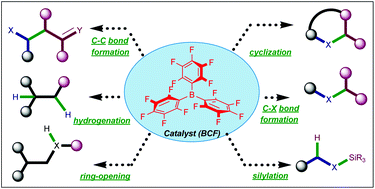
Org. Biomol. Chem., 2021,19, 1230-1267
https://doi.org/10.1039/D0OB02478C
Recent advances in single-benzene-based fluorophores: physicochemical properties and applications
The recently reported physicochemical properties and applications of single-benzene-based fluorophores (SBBFs) are summarized.
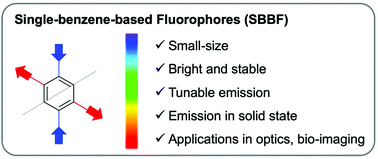
Org. Biomol. Chem., 2021,19, 933-946
https://doi.org/10.1039/D0OB02387F
Recent advances in the direct O-arylation of carbohydrates
An emerging approach for the synthesis of O-aryl glycosides and carbohydrate-derived aryl ethers via C(sp2)–O bond formation is reviewed.

Org. Biomol. Chem., 2021,19, 514-524
https://doi.org/10.1039/D0OB02009E
Beyond osmium: progress in 1,2-amino oxygenation of alkenes, 1,3-dienes, alkynes, and allenes
Olefin 1,2-difunctionalization is a popular synthetic strategy for synthesis of vicinal amino alcohols and their derivatives. This comprehensive review covers methods developed beyond the pioneering osmium-catalyzed Sharpless amino hydroxylation.

Org. Biomol. Chem., 2021,19, 46-81
https://doi.org/10.1039/D0OB01938K
Integrating abiotic chemical catalysis and enzymatic catalysis in living cells
We review hybrid systems of abiotic catalysis and enzymatic catalysis, which function in living cells. This research direction will stimulate multidisciplinary fields, including complex molecule synthesis, energy production, and life science.
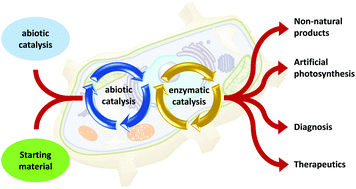
Org. Biomol. Chem., 2021,19, 37-45
https://doi.org/10.1039/D0OB01898H
Cobalt-catalyzed carbonylation of the C–H bond
Direct carbonylation of the C–H bond is a great tool for installing a carbonyl group in a wide variety of substrates.

Org. Biomol. Chem., 2020,18, 7460-7466
https://doi.org/10.1039/D0OB01633K
Synthetic approaches and applications of sulfonimidates
This review encompasses the developments in sulfonimidate chemistry, focusing on both syntheses and applications of these important organosulfur(VI) species.

Org. Biomol. Chem., 2020,18, 6429-6442
https://doi.org/10.1039/D0OB01191F
Rational design of small molecule fluorescent probes for biological applications
Guidelines based on photophysical tuning, reactivity, isomerization, and energy transfer for rational design of synthetic fluorescent probes for biological systems.
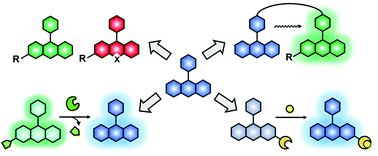
Org. Biomol. Chem., 2020,18, 5747-5763
https://doi.org/10.1039/D0OB01131B
The curious yellow colouring matter of the Iceland poppy
This account provides an chronological overview of the fascinating history of the pigment responsible for the yellow colour of the Iceland poppy (Papaver nudicaule).

Org. Biomol. Chem., 2020,18, 5278-5286
https://doi.org/10.1039/D0OB01162B
Chemical methods for modification of proteins
The field of protein bioconjugation draws attention from stakeholders in chemistry, biology, and medicine. This review provides an overview of the present status, challenges, and opportunities for organic chemists.

Org. Biomol. Chem., 2020,18, 4669-4691
https://doi.org/10.1039/D0OB00857E
Deuteration of terminal alkynes realizes simultaneous live cell Raman imaging of similar alkyne-tagged biomolecules
Two-color Raman imaging of D-alkynes and H-alkynes makes it possible to distinguish and observe similar small molecules in live cells.

Org. Biomol. Chem., 2021,19, 8232-8236
https://doi.org/10.1039/D1OB01479J
Calixarene-decorated liposomes for intracellular cargo delivery
Liposomes equipped at the outer membrane with positively charged calixarenes show improved efficiency in cargo delivery. This is facilitated by the interaction between the macrocycle units and heparan sulfate proteoglycans surrounding the cell.

Org. Biomol. Chem., 2021,19, 6598-6602
https://doi.org/10.1039/D1OB01055G
Chalcogen bonding mediates the formation of supramolecular helices of azapeptides in crystals
Supramolecular M- and P-helices are formed via intermolecular S⋯S and S⋯O chalcogen bonding of alanine-based azapeptides containing a β-turn structure and equipped with a thiophene group at the N- or C-terminus, respectively.

Org. Biomol. Chem., 2021,19, 6397-6401
https://doi.org/10.1039/D1OB01053K
Water binding stabilizes stacked conformations of ferrocene containing sheet-like aromatic oligoamides
The encapsulation of discrete water molecules in flexible sheet-like aromatic oligoamide foldamers, as evidenced by structural and spectroscopic studies, stabilizes their structure.
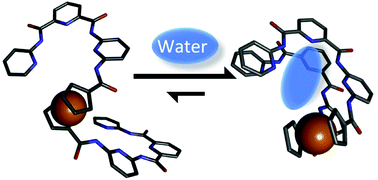
Org. Biomol. Chem., 2021,19, 5521-5524
https://doi.org/10.1039/D1OB00580D
Plasma induced acceleration and selectivity in strain-promoted azide–alkyne cycloadditions
We report the unexpected acceleration of strain-promoted azide–alkyne cycloaddition in human plasma compared to classical solvent systems. Besides fast kinetics, human plasma also allows for discrimination between two azides in competition reaction.

Org. Biomol. Chem., 2021,19, 5063-5067
https://doi.org/10.1039/D1OB00529D
Mannich-type allylic C–H functionalization of enol silyl ethers under photoredox–thiol hybrid catalysis
The synergy of an Ir-based photosensitizer with mild oxidizing ability and a thiol catalyst enables efficient allylic C–H functionalization of enol silyl ethers with imines under visible light irradiation.
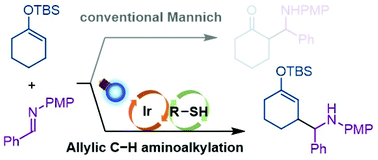
Org. Biomol. Chem., 2021,19, 141-145
https://doi.org/10.1039/D0OB01862G
Chemoselective activation of ethyl vs. phenyl thioglycosides: one-pot synthesis of oligosaccharides
Ethyl thioglycosides could be selectively activated in the presence of phenyl thioglycosides carrying the same or even more armed protecting group pattern.

Org. Biomol. Chem., 2020,18, 9029-9034
https://doi.org/10.1039/D0OB01606C
Hydroquinone and benzoquinone-catalyzed aqueous Knoevenagel condensation
Aqueous Knoevenagel condensation of various aldehydes with malononitrile could efficiently proceed using hydroquinone and benzoquinone as mixed catalysts.

Org. Biomol. Chem., 2020,18, 6594-6597
https://doi.org/10.1039/D0OB01397H
Disulphide-mediated site-directed modification of proteins
Site-directed addition of a single thiols handle to proteins by means of temporary disulphide rebridging of solvent exposed disulphides is obtained with a new labelling reagent.

Org. Biomol. Chem., 2020,18, 4717-4722
https://doi.org/10.1039/D0OB00861C
Site-selective modification of proteins using cucurbit[7]uril as supramolecular protection for N-terminal aromatic amino acids
Supramolecular protection of N-terminal aromatic amino acids through complexation with cucurbit[7]uril can enable site-selective protein modification of unfavored motifs.
![Graphical abstract: Site-selective modification of proteins using cucurbit[7]uril as supramolecular protection for N-terminal aromatic amino acids](/en/Image/Get?imageInfo.ImageType=GA&imageInfo.ImageIdentifier.ManuscriptID=D0OB01004A&imageInfo.ImageIdentifier.Year=2020)
Org. Biomol. Chem., 2020,18, 4371-4375
https://doi.org/10.1039/D0OB01004A
Rapid sodium periodate cleavage of an unnatural amino acid enables unmasking of a highly reactive α-oxo aldehyde for protein bioconjugation
A genetically incorporated ThrK unnatural amino acid can undergo rapid periodate oxidation to reveal a reactive internal α-oxo aldehyde.

Org. Biomol. Chem., 2020,18, 4000-4003
https://doi.org/10.1039/D0OB00972E
Hierarchical self-assembly of an azobenzene dyad with inverted amide connection into toroidal and tubular nanostructures
Inversion of the amide connectivity of an azobenzene dyad, which self-assembles into chiral toroids and nanotubes, improves the thermal stability of the assemblies, however it negatively affects supramolecular chirality.
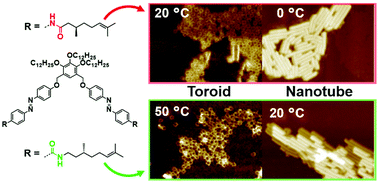
Org. Biomol. Chem., 2020,18, 3996-3999
https://doi.org/10.1039/D0OB00833H
A supramolecular host for phosphatidylglycerol (PG) lipids with antibacterial activity
Various small molecules containing boronic acid and urea functionalities are shown to bind selectively to the bacterial lipid PG (phosphatidylglycerol) and exert antibacterial activity through a membrane-related mechanism.
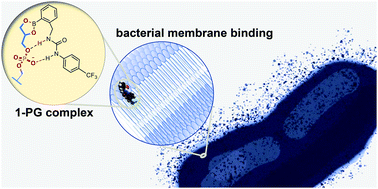
Org. Biomol. Chem., 2022,20, 5958-5966
https://doi.org/10.1039/D1OB02298A
Duplex vs. folding: tuning the self-assembly of synthetic recognition-encoded aniline oligomers
We present a strategy for characterising and preventing the undesired folding between adjacent units in duplex-forming synthetic hetero-oligomers.

Org. Biomol. Chem., 2021,19, 8947-8954
https://doi.org/10.1039/D1OB01882E
An air-stable, Zn2+-based catalyst for hydrosilylation of alkenes and alkynes
An air-stable, Zn2+-based catalyst for catalytic hydrosilylation reactions of alkenes and alkynes.
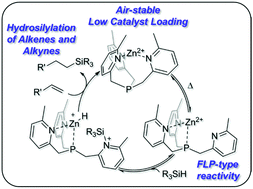
Org. Biomol. Chem., 2021,19, 5544-5550
https://doi.org/10.1039/D1OB00782C
Hydrated metal ion as a general acid in the catalytic mechanism of the 8–17 DNAzyme
pH-Rate profiles indicate hydrated M2+ as a general acid in the catalytic mechanism of the RNA-cleaving 8–17 DNAzyme.
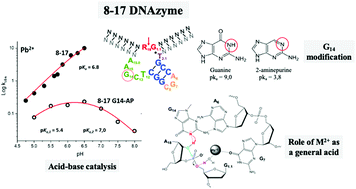
Org. Biomol. Chem., 2021,19, 5395-5402
https://doi.org/10.1039/D1OB00366F
The effect of deoxyfluorination and O-acylation on the cytotoxicity of N-acetyl-D-gluco- and D-galactosamine hemiacetals
Multiple deoxyfluorination of GlcNAc/GalNAc hemiacetals generated cytotoxic compounds.

Org. Biomol. Chem., 2021,19, 4497-4506
https://doi.org/10.1039/D1OB00497B
Development of functionalized peptides for efficient inhibition of myostatin by selective photooxygenation
Functionalized peptides which consist of myostatin-binding peptide and on/off-switchable catalyst efficiently inhibit myostatin by selective photooxygenation, leading to a therapeutic strategy for muscular atrophic disorders.

Org. Biomol. Chem., 2021,19, 199-207
https://doi.org/10.1039/D0OB02042G
DNAzymes for amine and peptide lysine acylation
In vitro selection identifies DNAzymes that acylate amino groups, including Lys in tethered peptides, and in some cases by transfer of a small glutaryl group.

Org. Biomol. Chem., 2021,19, 171-181
https://doi.org/10.1039/D0OB02015J
Post-synthetic transamination at position N4 of cytosine in oligonucleotides assembled with routinely used phosphoramidites
A novel strategy for the efficient and cheap post-modification of oligonucleotides at internal position.

Org. Biomol. Chem., 2020,18, 9632-9638
https://doi.org/10.1039/D0OB02059A
Facile synthesis of sulfotyrosine-containing α-conotoxins
A one-pot neopentyl deprotection and oxidative disulfide pairing strategy was developed for the facile synthesis of sulfotyrosine (sY)-containing α-conotoxins (Ctx).

Org. Biomol. Chem., 2020,18, 7559-7564
https://doi.org/10.1039/D0OB01526A
Revisiting the role of acids and hydrogen bond acceptors in enamine formation
A systematic investigation into the effects of acids and hydrogen bond acceptors on the reaction rates and equilibria of enamine formation is reported.

Org. Biomol. Chem., 2020,18, 6849-6852
https://doi.org/10.1039/D0OB01579B
Absolute handedness control of oligoamide double helices by chiral oxazolylaniline induction
Aromatic oligoamide double helices bearing a chiral oxazolylaniline moiety were synthesized and their helix handedness was completely controlled (de > 99%).

Org. Biomol. Chem., 2020,18, 6643-6650
https://doi.org/10.1039/D0OB01503B
Decomplexation as a rate limitation in the thiol-Michael addition of N-acrylamides
Experimental and computational agreement highlights rate-limiting “product decomplexation” and functional group effects in the thiol-Michael addition, utilized for sequence-defined oligomers.

Org. Biomol. Chem., 2020,18, 6364-6377
https://doi.org/10.1039/D0OB00726A
Photochemical [2 + 2] cycloaddition reaction of carbonyl compounds with Danishefsky diene
An efficient oxetane formation has been developed in the photochemical [2 + 2] cycloaddition reaction of benzophenone with Danishefsky diene.
![Graphical abstract: Photochemical [2 + 2] cycloaddition reaction of carbonyl compounds with Danishefsky diene](/en/Image/Get?imageInfo.ImageType=GA&imageInfo.ImageIdentifier.ManuscriptID=D0OB00921K&imageInfo.ImageIdentifier.Year=2020)
Org. Biomol. Chem., 2020,18, 4962-4970
https://doi.org/10.1039/D0OB00921K
Tuning activation and self-immolative properties of the bioorthogonal alkene–azide click-and-release strategy
Combinations of aryl azides and trans-cyclooctenes have been studied in a bioorthogonal click-and-release strategy, with two reaction pairings rapidly releasing phenol at micromolar concentrations.
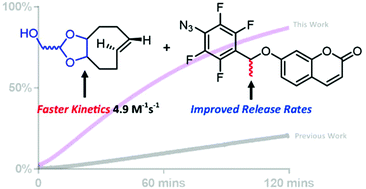
Org. Biomol. Chem., 2020,18, 4754-4762
https://doi.org/10.1039/D0OB00936A
One-pot synthesis of porphyrin-based [5]rotaxanes
[5]Rotaxanes prepared in a one-pot reaction via simultaneous threading-followed-by-stoppering and condensation can be used to generate different co-conformational states making these systems potential multi-state switches.
![Graphical abstract: One-pot synthesis of porphyrin-based [5]rotaxanes](/en/Image/Get?imageInfo.ImageType=GA&imageInfo.ImageIdentifier.ManuscriptID=D0OB00906G&imageInfo.ImageIdentifier.Year=2020)
Org. Biomol. Chem., 2020,18, 4395-4400
https://doi.org/10.1039/D0OB00906G